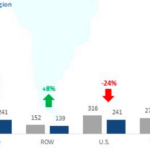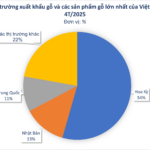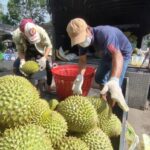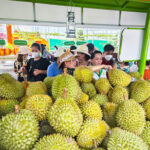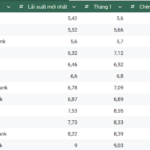Vietnam’s fruit and vegetable exports are facing challenges in reaching their $8 billion target for 2025, according to Dang Phuc Nguyen, Secretary-General of the Vietnam Fruit and Vegetable Association (VINAFRUIT).
A Challenging Dream
VINAFRUIT reported that fruit and vegetable exports reached nearly $7.2 billion in 2024, a 27% increase from the previous year. This was a record for the industry and a bright spot in the agricultural export picture for that year. Durian was the top exported fruit, with an estimated value of $3.3 billion, followed by dragon fruit at $435 million, and bananas, mangoes, and other products such as jackfruit, coconuts, and watermelons.
After an impressive performance last year, the industry set an ambitious goal of $8 billion in exports for 2025. However, durian, the key export commodity, faced setbacks in the Chinese market, casting doubt on the sector’s ability to achieve its target.
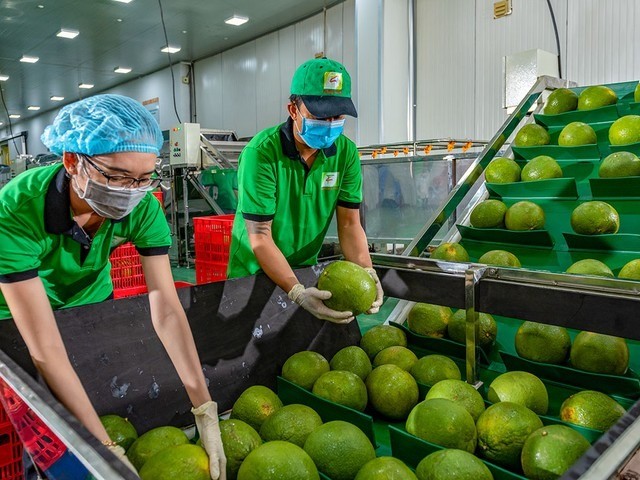
Fruit and vegetable exports reached $1.6 billion in the first four months. Photo: Manh Hung.
According to data from the Customs Department, fruit and vegetable exports in April reached just over $520 million, a nearly 10% increase from the previous month but a 13% decrease from April 2024.
In the first four months of the year, the industry brought in more than $1.6 billion, a 10.5% decrease from the same period last year. Exports to China, the largest market for Vietnamese fruit and vegetables, reached over $777 million, a nearly 33% decrease.
Despite the decline, China still accounted for nearly 46% of the total fruit and vegetable export value. The United States and South Korea were the next largest markets, accounting for 9% ($154 million) and 6% ($101 million), respectively.
Mr. Nguyen attributed the industry’s struggles to durian’s performance in the Chinese market, which has caused a downward trend in fruit and vegetable exports over the past four months.
This year, China has tightened its quality control measures for imported durian, with stricter standards for quarantine, cadmium residue, and source traceability. As a result, many batches have failed to meet the requirements, disrupting the consumption chain.
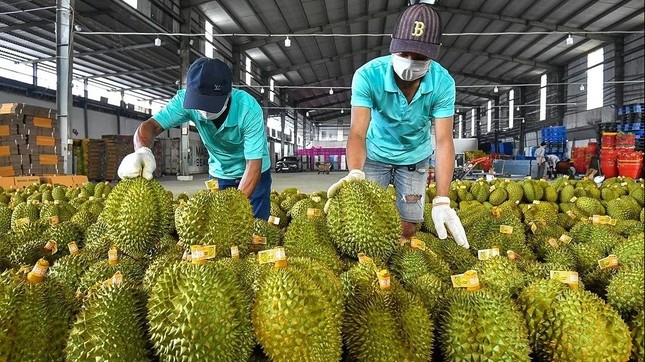
Durian exports have declined significantly. Illustration: IT.
Mr. Nguyen emphasized, “It’s already been four months, and fruit and vegetable exports have only reached $1.6 billion. Even if the durian export situation improves, achieving the $8 billion target will be challenging.”
In response to this situation, Do Duc Duy, Minister of Agriculture and Environment, has directed relevant units to implement short-term and long-term solutions to facilitate durian exports. This is considered a key task for the ministry in the coming period.
Minister Duy emphasized, “Durian is a key export commodity to a key market, so we must act quickly and urgently to complete the legal framework, standards, procedures, and processes.”
Reasons for Optimism
Despite the overall decline in fruit and vegetable exports, there are some positive signs that offer reasons for optimism.
While fresh fruit and vegetable exports decreased, processed fruit and vegetable products showed significant growth, especially in the US market. According to the Import and Export Department of the Ministry of Industry and Trade, Vietnam was the 11th largest supplier of fruits, flowers, vegetables, and processed products to the US in the first two months, with exports reaching $122.4 million, a 57.7% increase from the same period in 2024.
In addition to durian, other fruits such as bananas, jackfruit, mangoes, lychees, longans, and dragon fruit have significant potential and are being promoted for fresh, frozen, and dried exports. Particularly, mango and coconut exports are on an upward trend. In the first two months, mango exports reached $52 million, a 27% increase from the previous year, while coconut exports brought in $33 million, an 18% increase year-on-year.
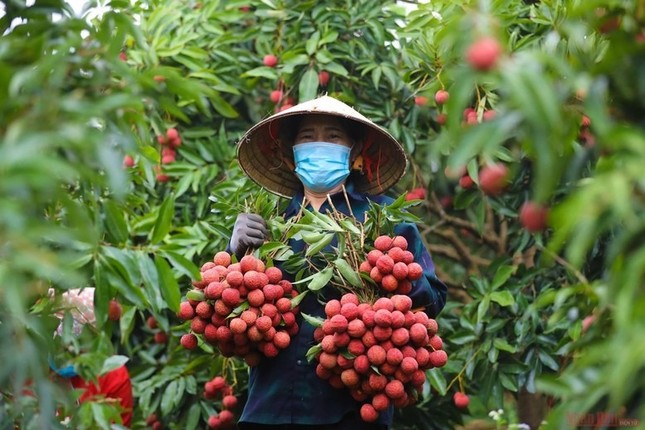
A good lychee crop is expected to bring a bumper harvest to farmers. Photo: Nhan Dan Newspaper.
Lychee, traditionally consumed mainly domestically, is also being promoted for export this year due to its impressive production growth. The total lychee output is expected to reach approximately 303,000 tons, a 30% increase from last year. The Ministry of Agriculture and Environment plans to boost exports to account for about 40% of the total output.
A significant development in this year’s lychee crop is that Japan has agreed to allow Vietnam to self-monitor the lychee export treatment process instead of sending experts to supervise, as in previous years. Additionally, the US has approved three additional growing area codes in Bac Giang province, bringing the total number of approved codes in the province to over 240, covering nearly 18,000 hectares. These developments reflect the growing trust of demanding markets in Vietnam’s food safety and control capabilities.
In April, the Ministry of Agriculture and Environment of Vietnam and the General Administration of Customs of China signed four protocols, including two on chili and passion fruit exports. This adds to the optimism for fruit and vegetable exports in 2025.
“Vietnam Overtakes the US as Vinh Hoan’s Top Revenue-Generating Market in Q1 2025”
In 2024, the US market generated the highest revenue for Vinh Hoan, amounting to VND 3,937 billion, accounting for 31.4% of their total revenue.
The Truth Behind Vietnam’s Durian Losing its ‘Throne’
Despite being touted as the billion-dollar industry for Vietnamese agriculture, durian exports have only achieved 20% of the target since the beginning of the year. This situation not only impacts the overall goals of the industry but also leads to a significant dip in the domestic market value of durians.



























